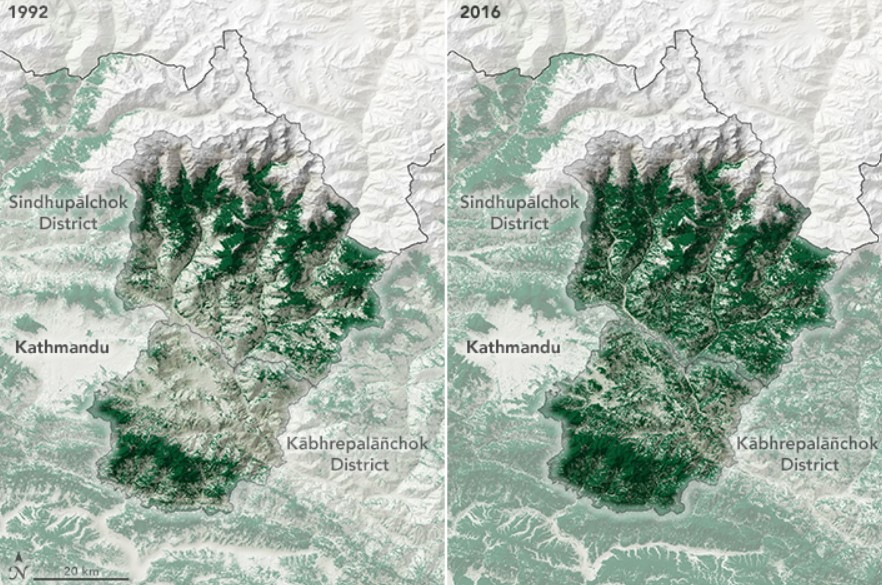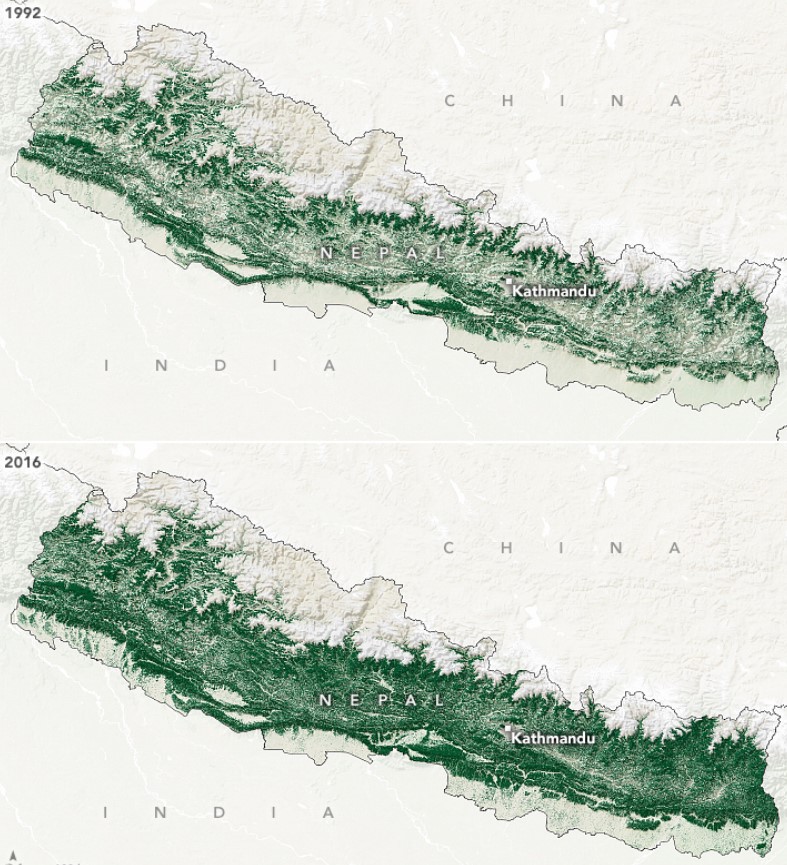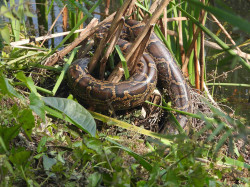Nature

Besides Mount Everest and other Eight Thousand-ers, Nepal is famous for its community forestry programme which has helped massively regenerate its forest cover. After the programme was introduced in the early 1990s, forests across Nepal’s hills and plains have nearly doubled in 24 years. This week, the US National Aeronautics and Space Administration (NASA)’s Earth Observatory has published an article on how community forestry changed Nepal’s landscape. Here’s the article by Emily Cassidy:
In the 1970s, Nepal was facing an environmental crisis. Forests in Nepal’s hillsides were being degraded due to livestock grazing and fuelwood harvesting, which led to increased flooding and landslides. Without large-scale reforestation programs, a 1979 World Bank report warned, forests in the country’s hills would be largely gone by 1990.
In the 1980s and 1990s, Nepal’s government began to reassess its national-level forest management practices, which led to a pivotal forestry act in 1993. This legislation allowed Nepal’s forest rangers to hand over national forests to community forest groups. The result of this community-led management, recent NASA-funded research has found, was a near-doubling of forest cover in the small mountainous country.

The maps above show forest cover in Nepal in 1992 (top) and 2016 (bottom). Between these years, forest cover in the country almost doubled, from 26 percent to 45 percent. Using the long-term data record from Landsat satellites, along with in-depth interviews with people in Nepali villages, the research group found that community forest management was associated with the regrowth of forests. Most of the tree regrowth happened in middle-elevations, in the hills between the Himalayas and the plains of the Ganges River.
“Once communities started actively managing the forests, they grew back mainly as a result of natural regeneration,” said Jefferson Fox, the principal investigator of the NASA Land Cover Land Use Change project and Deputy Director of Research at the East-West Center in Hawaii. Before Nepal passed the 1993 forestry act, government management of forests was less active. “People were still using the forests,” Fox added, “they just weren’t allowed to actively manage them, and there was no incentive to do so.” As a result, the forests were heavily grazed by livestock and picked over for firewood. They became degraded.
Under community forest management, local forest rangers worked with the community groups to develop plans outlining how they could develop and manage the forests. People were able to extract resources from the forests (fruits, medicine, fodder) and sell forest products, but the groups often restricted grazing and tree cutting, and they limited fuelwood harvests. Community members also actively patrolled forests to ensure they were being protected.
These maps show forest cover in Kābhrepalāñchok (Kabhre Palanchok) and Sindhupālchok (Sindhu Palchok), districts in the Bagmati Province east of Kathmandu. These districts were the focus of recent regional land cover change analysis because of their early adoption of community forestry. Beginning in the 1980s, the Australian government financed tree planting projects in these districts as well as the development of community forest groups. In many of the community forests, active management allowed trees to grow back naturally in the hills, but tree planting efforts were needed in lower elevation areas that were largely devoid of vegetation.
One community forest (called Devithan or sacred grove in Nepali) lies to the east of Kābhrepalāñchok. Using Landsat data dating back to 1988, the research group found that the Devithan community forest had only 12 percent forest cover in 1988, which grew to 92 percent in 2016.
Although the Devithan community forest wasn’t a formal community forest until 2000, the community organized into an informal community forest management group (with laws limiting grazing and fuelwood collecting) after the 1993 forestry act. The study found that trees and vegetation rapidly regenerated, expanding canopy cover and the availability of fodder within the first few years of informal management. Within the boundaries of this community forest, about 25 percent of total forest regeneration happened before Nepal’s forest rangers formally recognized them as a community group.
Today, community forests occupy nearly 2.3 million hectares—about a third of Nepal’s forest cover—and are managed by over 22,000 community forest groups comprising 3 million households. A 2016 United Nations report on the state of forests around the world found that three countries with the most annual gain in tree cover between 2010 and 2015 were the Philippines (with an annual growth rate of 3.3 percent), Chile (1.8 percent), and Lao PDR (0.9 percent). Within community forests of Kābhrepalāñchok and Sindhupālchok, forest growth between 2010 and 2015 was 1.84 percent.
Click here to read the original article
NASA Earth Observatory images by Lauren Dauphin, using data from Van Den Hoek, J., et al. 2021. Story by Emily Cassidy.






